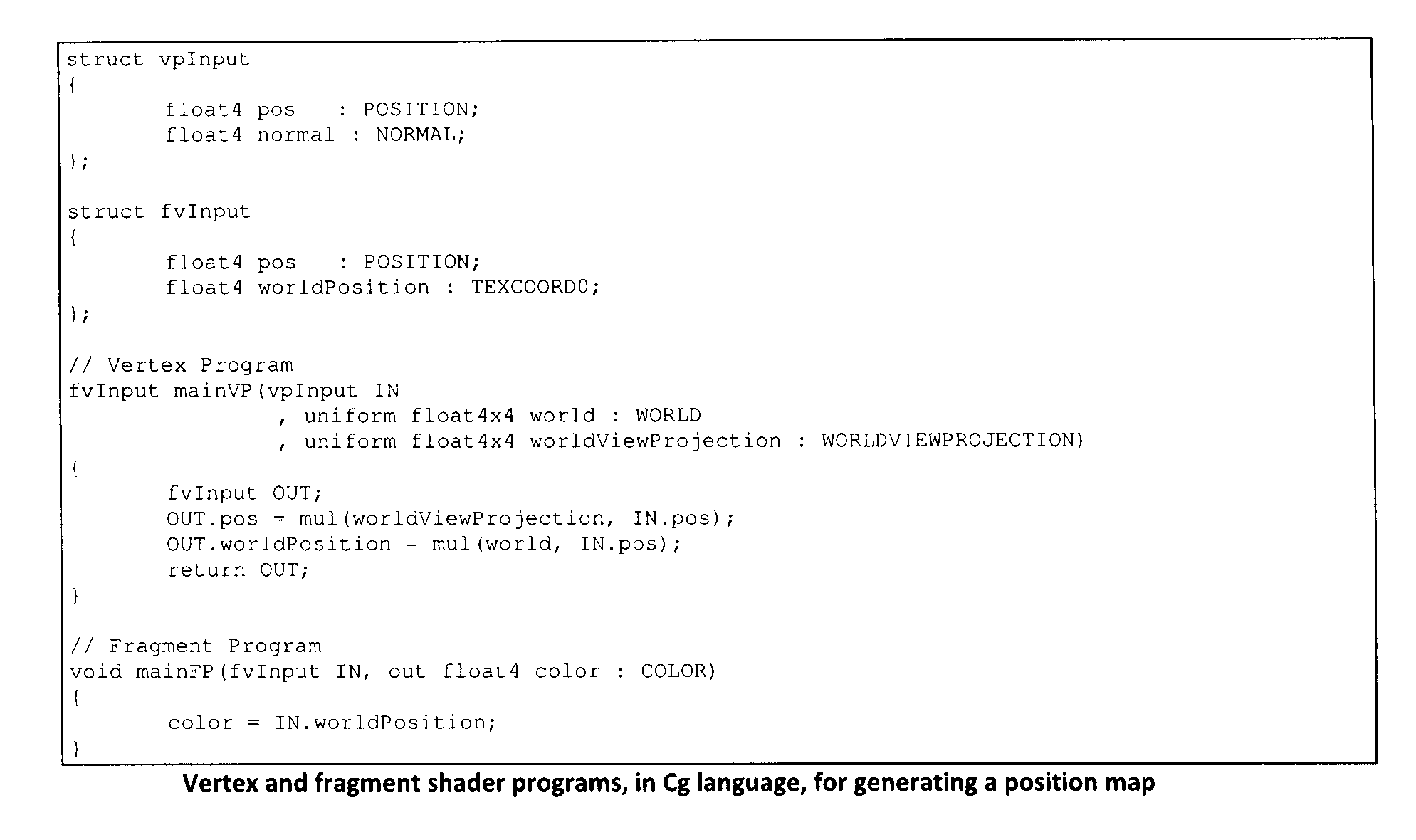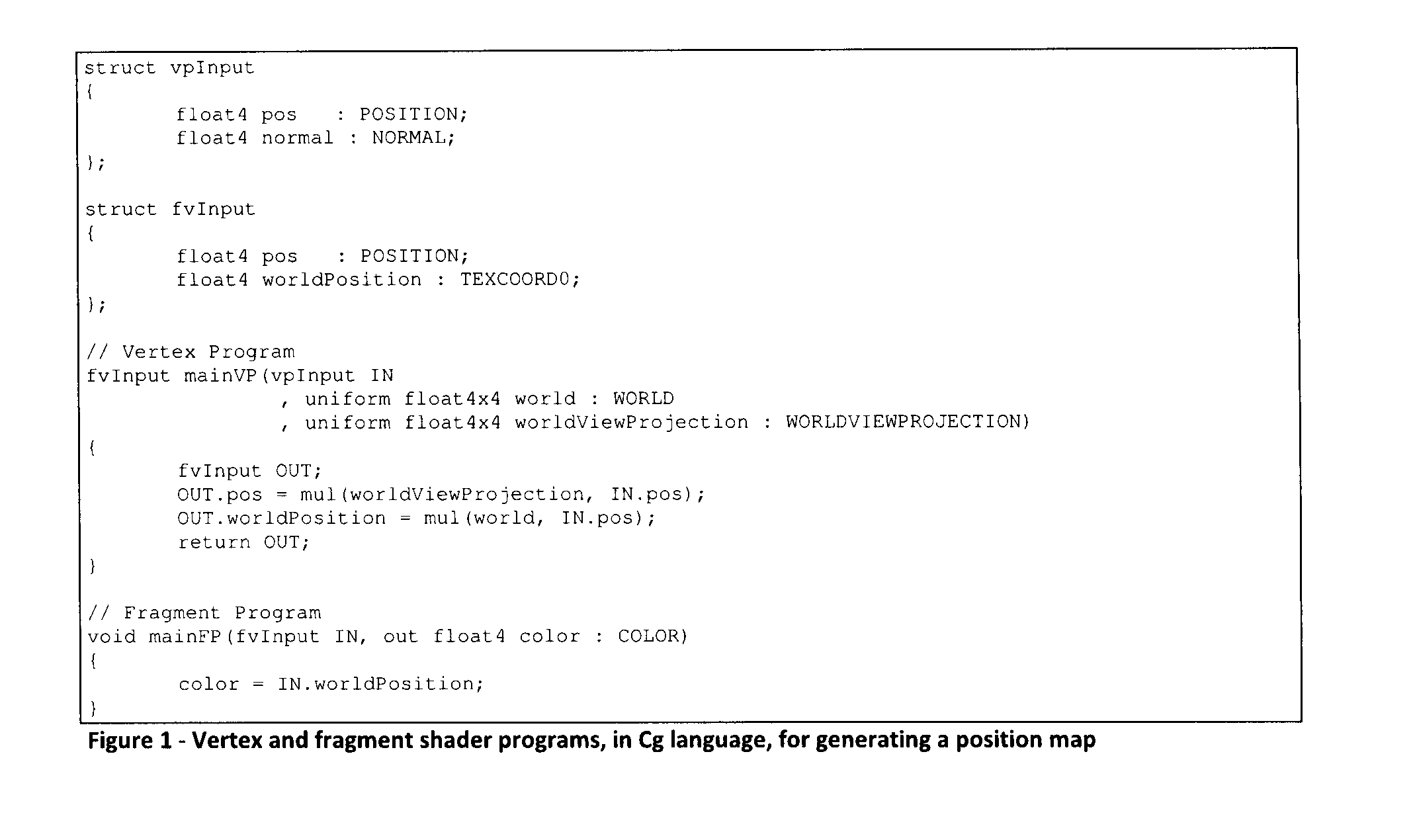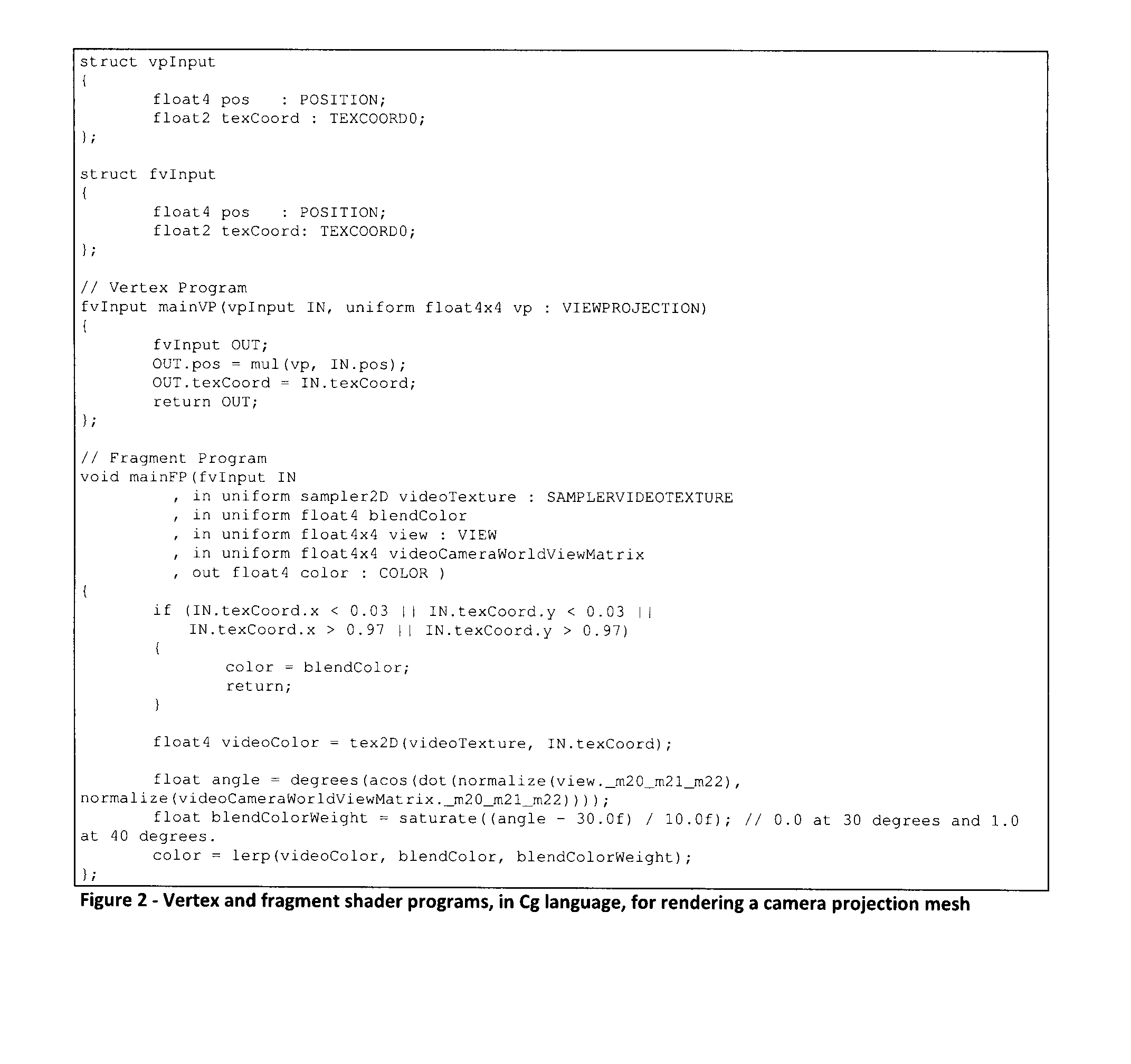Camera Projection Meshes
a technology of projection meshes and cameras, applied in the field of tridimensional (also), can solve the problems of excessively expensive and slow real-time use of the whole scene, affecting the performance of video surveillance cameras, and the hardware limit on the number of video surveillance cameras. , to achieve the effect of less complex, faster rendering, and increased video projection rendering performan
- Summary
- Abstract
- Description
- Claims
- Application Information
AI Technical Summary
Benefits of technology
Problems solved by technology
Method used
Image
Examples
Embodiment Construction
[0023]Novel methods for rendering tridimensional (3D) areas or scenes based on video camera images and video sequences will be described hereinafter. Although the invention is described in terms of specific illustrative embodiments, it is to be understood that the embodiments described herein are by way of example only and that the scope of the invention is not intended to be limited thereby.
[0024]The creation and use of a Camera Projection Mesh (hereinafter “CPM”) has four main phases:
[0025]a. the position map creation phase;
[0026]b. the mesh draw buffer creation phase;
[0027]c. the mesh rendering phase; and
[0028]d. the mesh invalidation phase.
[0029]Position Map Creation Phase
[0030]First a position map is created from the point of view of the video camera. A position map is a texture that contains coordinates (x, y, z, w) components instead of color values (red, green, blue, alpha) in its color components. It is similar to a depth map which contains depth values instead of color val...
PUM
 Login to View More
Login to View More Abstract
Description
Claims
Application Information
 Login to View More
Login to View More - R&D
- Intellectual Property
- Life Sciences
- Materials
- Tech Scout
- Unparalleled Data Quality
- Higher Quality Content
- 60% Fewer Hallucinations
Browse by: Latest US Patents, China's latest patents, Technical Efficacy Thesaurus, Application Domain, Technology Topic, Popular Technical Reports.
© 2025 PatSnap. All rights reserved.Legal|Privacy policy|Modern Slavery Act Transparency Statement|Sitemap|About US| Contact US: help@patsnap.com



